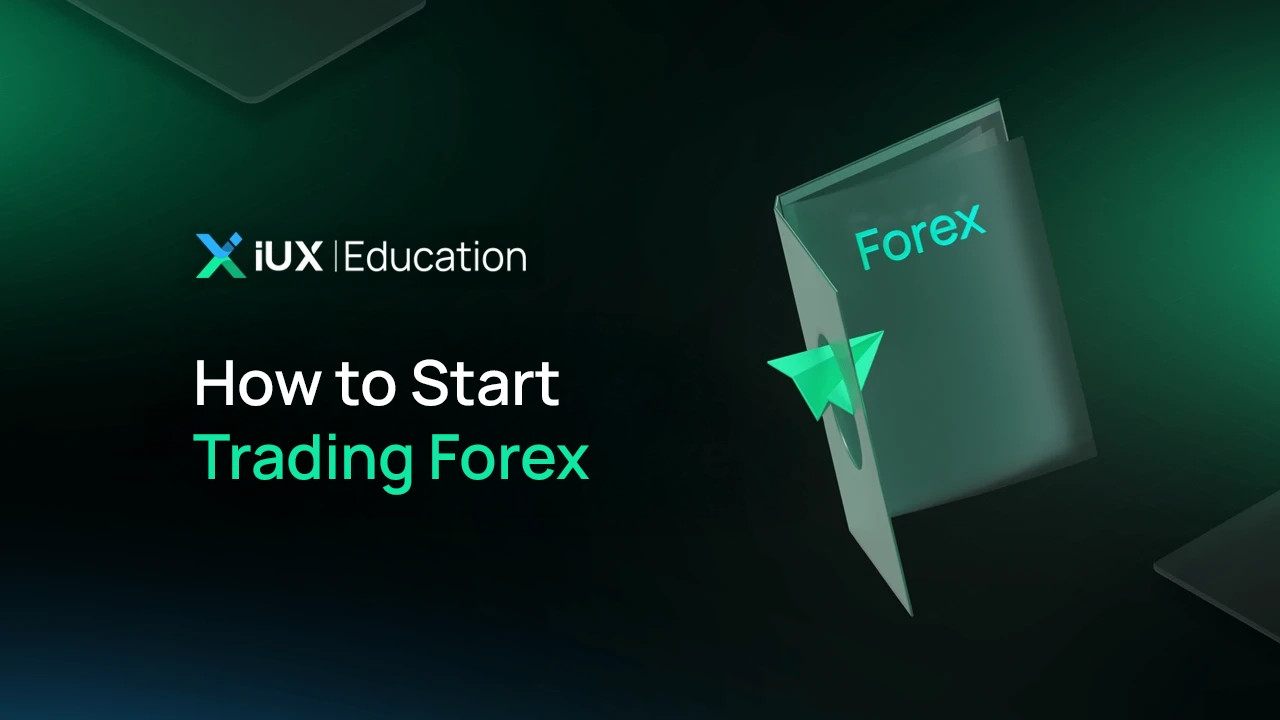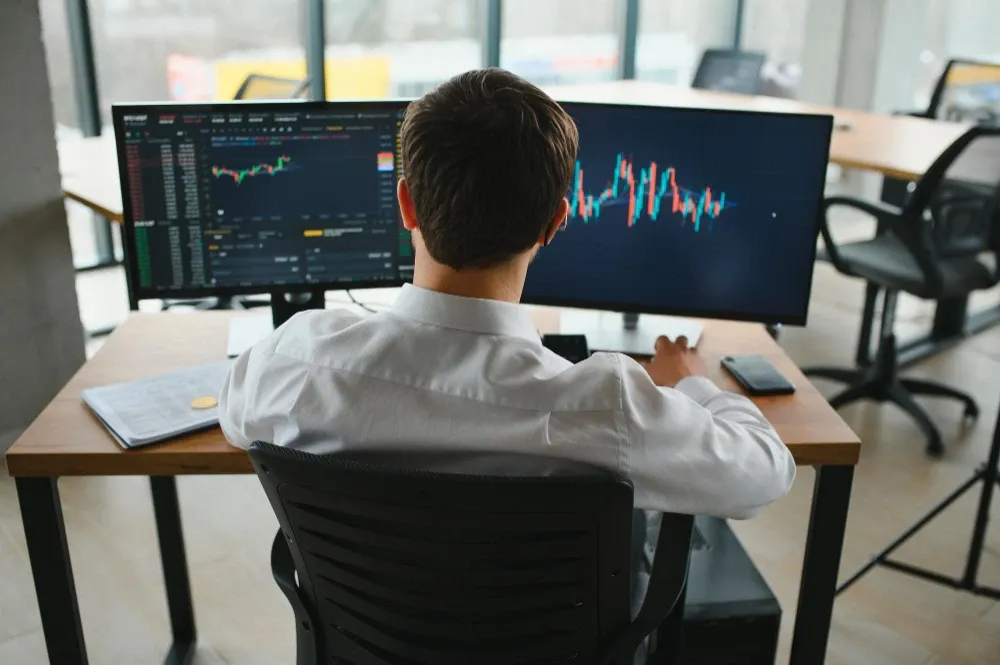
如何开始进行外汇交易
如何开始进行外汇交易
许多人可能已经知道,外汇市场(Foreign Exchange Market)是世界上最大的金融市场。它每天 24 小时、一周五天运作,投资者和交易者可以在其中买卖诸如 EUR/USD、GBP/USD 或 USD/JPY 等货币对,目标是从汇率波动中获利。
其主要特点之一是既可以在上涨市场中获利,也可以在下跌市场中获利。然而,它同样伴随显著风险,因此只适合那些认真研究并理解市场机制的人。
| 关键要点 |
- 外汇交易并不是实际兑换或持有真实货币。
- 差价合约(CFD)交易为进入不同资产类别提供了灵活性。
- 外汇交易中的利润来自于预测某一货币对会上涨还是下跌,以及涨跌幅度。
- 在外汇中的潜在收益取决于手数以及你如何有效地管理风险。

外汇不是货币兑换
初学者需要理解的最重要一点是:外汇交易并不等同于在银行或金融机构实际购买或兑换货币。它是一种通过差价合约(CFD)进行的投机,交易者可以在不实际持有基础货币的情况下买卖货币对。
关键在于,盈利或亏损取决于价格变动——而不是兑换纸币或账户余额。这意味着外汇交易关注的是预测市场方向和管理风险,而不是持有真实资产。
什么是差价合约(CFD)?
差价合约是一种为投资提供灵活性而设计的金融工具。它使得无论是初学者还是机构投资者,都能对不同资产的价格变化进行投机——无论是货币、股票、指数还是大宗商品——而无需持有实际资产。通过差价合约,交易者既能从价格上涨(买入/做多)中获利,也能从价格下跌(卖出/做空)中获利。另一大优势是,它只需要相对较低的初始资金,因为杠杆的存在提高了市场的可进入性。
| 提示:除了外汇,通过差价合约交易的另一种非常受欢迎的资产是 XAU/USD,它代表以美元计价的黄金价格。 |

如何在外汇中获利
在外汇市场中获利遵循一些基本原则:
- 选择你想要交易的货币对。
- 预测价格将会朝哪个方向移动(上涨或下跌)。
- 如果预期价格上涨,就开立买入单(Buy);如果预期价格下跌,就开立卖出单(Sell)。
- 一旦价格朝着有利于你的方向移动,你就可以平仓,并从价格差中获利。
虽然在外汇中获利的核心理念听起来很简单——只需预测价格会上涨还是下跌——但现实更为复杂。市场中有许多功能、工具和细节会直接影响盈亏。这些都是交易者必须认真学习且不可忽视的。
你接下来应该学习的内容
- 点(Pip):衡量价格变动的单位。.
- 手数(Lot Size):每笔订单的交易量。
- 止损(Stop Loss):当市场走势不利于你的预测时,自动限制亏损的订单。
- 止盈(Take Profit):当达到目标价位时,自动锁定利润的订单。
- 杠杆(Leverage):来自经纪商的借入资金,允许你开立更大头寸,同时放大潜在收益与风险。
一个可靠的经纪商可以让你的交易之路更顺畅。
在 IUX,你可以使用现代化的交易技术、全面的分析工具、实时价格图表以及极速的执行力。此外,你还将拥有一个全天候 24/7 的专业支持团队。
立即通过 IUX 开始你的外汇交易之旅——测试策略,提升技能,把握全球金融市场中的机遇。

外汇交易的简单示例
假设你预期 EUR/USD 货币对将会上涨,并决定开立买入单。
-
开仓
-
你预测“欧元将相对于美元走强”。
-
于是,你在 EUR/USD 1.1000 开立买入头寸。
-
-
价格变动
-
之后,价格上涨至 1.1050。
-
差值为 0.0050,即 50 点。
-
-
平仓
-
你在 1.1050 平仓。
-
利润 = 价格差 × 订单手数(Lot)
-
-
利润计算
-
如果交易 1 手 → 1 点 ≈ 10 美元 → 利润 = 50 点 = 500 美元
-
如果交易 0.1 手 → 1 点 ≈ 1 美元 → 利润 = 50 点 = 50 美元
-
如果交易 0.01 手 → 1 点 ≈ 0.10 美元 → 利润 = 50 点 = 5 美元
-
可以看到,你的利润取决于手数以及预测的准确性。如果价格如预期上涨并开立买入单,你就会获利。但如果市场走势与你预测相反,你将面临亏损风险。
务必牢记,交易伴随风险。谨慎的规划和良好的风险管理至关重要。初学者应先通过模拟账户练习分析并理解市场运作,然后再投入真实资金。当转向真实账户时,最好只投入一小部分资金,始终设置止损,并避免让情绪左右你的决策。
💡 常见问题 (FAQ)
Q: 开始进行外汇交易需要多少钱?
A: 你不需要很多资金即可开始。大多数经纪商允许你用最低 10–100 美元开户,并且可以使用杠杆来扩大投资机会。不过,你应只投资与自己财务状况相适应的金额。
Q: 外汇与在银行换钱有何不同?
A: 在银行换钱是实际持有货币。而外汇交易主要通过差价合约 (CFD) 进行,你是在投机价格波动,而不是实际持有货币。
Q: 初学者该如何开始外汇交易?
A: 首先学习基础知识,使用模拟账户练习,并培养风险管理技巧,如设置止损 (Stop Loss) 和止盈 (Take Profit)。当理解更深入后,再用小额资金进行真实交易。


